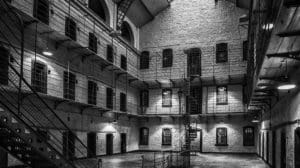Origins of Celtic Festivals: Unravelling the Historical Celebrations

Updated On: April 22, 2024 by Ciaran Connolly
Celtic festivals have long been a cornerstone of cultural expression among the ancient Celts of Ireland, Scotland, and other regions of Europe. Traditionally, these festivals marked significant seasonal transitions and were imbued with deep spiritual and societal importance. They served as a time for the community to gather, pay homage to Celtic gods, and engage in rituals that reflected their close ties to the natural world and their reliance on its cycles.

Rooted in a rhythmic agricultural calendar, Celtic festivals such as Samhain, Imbolc, Beltane, and Lughnasadh demarcated the changing of the seasons and were essential to the pre-Christian Celts’ understanding of life, death, and renewal. These festivals not only fostered unity within communities but also reflected the Celts’ profound reverence for the land. Over time, the arrival of Christianity led to a syncretism of beliefs, resulting in the merging of pagan traditions with Christian observances and giving rise to many of the customs we recognise today.
Key Takeaways
- Celtic festivals were integral to ancient Celtic societies, marking important seasonal changes.
- Seasonal celebrations had deep spiritual significance and were linked to agricultural practices.
- The influence of Christianity led to the fusion of Celtic traditions with Christian festivities.
Historical Context of Celtic Festivals
In our exploration of the historical context of Celtic festivals, we uncover the rich tapestry of customs that originate from the ancient Celtic people. These festivals are not mere dates on the Celtic calendar; they are a deep-seated part of our heritage, central to understanding the cultural practices of the ancient Irish and Celts throughout Europe.
The Celts, known for their vibrant communities and intricate artwork, structured their year around significant seasonal festivals. These gatherings held immense spiritual and social importance, often aligning with agricultural cycles. The ancient traditions that defined these celebrations continue to reverberate in Celtic traditions we observe today.
- Samhain: Marking the end of the harvest season and the onset of winter, this festival celebrated from 31 October to November 1 stands as the precursor to modern Halloween. It was a time for honouring ancestors and the spirits.
- Imbolc: Celebrated in early February, this festival honoured the goddess Brigid and heralded the beginning of spring.
- Beltane: Falling at the start of May, Beltane was a festival of fire symbolising the peak of spring and the promise of summer.
- Lughnasadh: Around August 1, this festival commenced the harvest season, dedicated to the god Lugh, signifying the importance of the crop yield for the community.
These festivals were fundamental in shaping the cultural identity of the Celts, with celebrations deeply entwined with nature and the divine. In recognising these customs, we come to appreciate the ways ancient wisdom and reverence for the earth have informed our modern celebrations and continue to guide the rhythms of our lives today.
Seasonal Celebrations and the Wheel of the Year
The ancient Celts observed the Wheel of the Year, a calendar that marks the changing seasons and agricultural cycles with specific festivals. These festivals, occurring at significant points in the season, celebrate the deep connection between human life and nature’s rhythms.
Samhain: The Celtic New Year
Samhain, celebrated on the first day of November, is considered the start of the Celtic New Year. This festival marks the end of the harvest season and the beginning of winter. The Celts believed that Samhain was when the veil between the living and the dead was thinnest, facilitating communication with ancestors. It’s a time for reflection on the past and preparing for the darker months ahead.
Imbolc: Beginning of Spring
Imbolc, occurring on the first day of February, heralds the early signs of spring. This festival is dedicated to the goddess Brigid and celebrates the awakening of the earth. Imbolc is a time for purification and the lighting of fires, symbolising the return of life and warmth as the days begin to lengthen following the winter solstice.
Beltane: The Fire Festival of Summer
Beltane is celebrated on the first day of May and signifies the beginning of summer. Beltane’s fire rituals celebrate fertility, both in nature and in our own lives. It is the time when the earth blossoms with life and the potential for new growth is honoured through various ceremonies.
Lughnasadh: Harvest Festival
Marking the beginning of the harvest season, Lughnasadh is observed on the first day of August. This festival is named after the god Lugh and is a time for giving thanks for the bounty of the previous months. Celebrations include feasting on the early harvest and participating in games and traditional crafts.
The Wheel of the Year and these seasonal celebrations are interconnected with the solstices and equinoxes. Summer solstice and winter solstice, the longest and shortest days of the year, along with the autumn equinox and spring equinox, times of equal day and night, are pivot points in this cycle, prominently acknowledging the sun’s influence on the earth’s fertility.
Traditional Rituals and Customs

Celtic festivals were deeply rooted in the natural world and the community’s relationship with it. Each ritual and custom played a crucial role in societal and spiritual life, reinforcing bonds with nature and the divine.
Fire Ceremonies and Bonfires
In ancient Celtic society, fire symbolised purity, healing, and transition. The communal bonfire was central to festivals like Samhain, where villagers gathered to light a massive fire, marking the end of the harvest and the beginning of the dark half of the year. These fire ceremonies served as protective rites, warding off harm during the challenging winter months ahead.
Offerings and Sacrifices
Offerings and sacrifices were a key aspect of Celtic worship. Honouring deities and spirits of the land involved presenting them with various items such as food, drink, or intricate crafts. It was believed that these offerings would appease the supernatural forces and ensure balance and favour for the community.
Feasting and Food
Feasts were a cornerstone of Celtic celebrations, featuring communal meals that brought people together in both joy and reverence. Food was more than sustenance; it was a symbol of prosperity and community. Large gatherings would partake in lavish spreads, replete with meat, seasonal produce, and ale, strengthening communal ties and honouring the abundance provided by the earth.
Significance of Natural Elements

In Celtic tradition, natural elements hold profound significance, especially as they relate to the rituals and celebrations of their festivals.
Agricultural Harvest
The harvest was a central aspect of Celtic life, marking a time of both gratitude and survival. We keenly observed the patterns of nature, understanding that the success of our crops was tied to the rhythms of the earth. Harvest season was celebrated with festivals like Samhain, which heralded the end of the harvest and the beginning of winter. These festivities were not merely agricultural markers but were imbued with deep spiritual meaning, recognising the cyclical nature of life, death, and rebirth.
Symbolism of the Sun and Moon
Our ancestors placed profound emphasis on the cycles of the sun and moon, which were integral to the timing of festivals. The sun held particular importance in the Celtic wheel of the year, with solstices and equinoxes defining many of our celebrations. The longer days of sunlight in the summer were crucial for a bountiful harvest, and thus we honoured the sun’s power during Midsummer. The moon, with its monthly cycles, was also held sacred and was associated with femininity and fertility. These celestial bodies were not just observed for their practical impact on agriculture but also revered for their symbolic connections to our lives.
Celtic Deities and Symbols
In our exploration of Celtic festivals, it is crucial to understand the roles of divine figures and emblematic icons that were central to Celtic belief systems. These elements not only shaped the ceremonial practices but also reflected the values and worldview of the ancient Celtic people.
Reverence for the Gods
The ancient Celts held a polytheistic belief system, with a pantheon of gods and goddesses serving various aspects of life and nature. Among these, Lugh, associated with the Samhain festival, was revered as a god of light and was celebrated for his skills as a craftsman and warrior. There was also the Dagda, father-figure to the Celts, renowned for his prowess and as a symbol of protection and authority.
Druidic Symbols and Mythology
The Celtic Tree of Life is a significant symbol in Druidic beliefs, embodying the connection between the cosmos, the earthly realm, and the underworld. Its branches and roots intertwined, the Tree of Life symbolises the interconnectedness of all life, a concept reverberating through Celtic mythology. Further reflecting the richness of this mythology are tales of cyclicality and rebirth, key themes reiterated in their legends and the veneration of natural elements.
Christian Influence and Syncretism

Before we delve into the details, it is important to recognise that Celtic festivals have undergone significant transformation through the ages, primarily influenced by Christianity. This syncretism blended pagan traditions with Christian beliefs, leading to the creation of new practices and festivals.
Saints’ Feasts and Christian Festivals
We have observed how the early Church often coincided its major festivals with pre-existing pagan ones. A noteworthy example is Christmas, which was strategically placed around the winter solstice, integrating traditions of the pagan festival of Saturnalia. Pope Boniface also played a vital role in melding these two belief systems by repurposing pagan sites and dates for Christian worship. This included sanctifying ancient groves, effectively transforming them into places of Christian prayer.
Many of the saints’ feast days are imbued with traces of pagan customs. Celebrations of these feasts frequently inherited the communal feasting and merrymaking from the local pagan traditions they replaced or absorbed.
Pagan Roots and Christian Overlay
Beneath the Christian surface of many festivals, pagan roots persist. It’s not unusual to see remnants of Celtic polytheism peeking through the veneer of Christian holidays. In some regions, Christian saints have assimilated characteristics of earlier deities, reflecting a syncretic blend where a saint might take on a role similar to that of a pre-Christian god or goddess.
Our careful navigation through history reveals for us the complex tapestry of Celtic festivals. It is a narrative of religious evolution, where resilience and adaptability showcase a harmonious coalescence between Christianity and pagan customs.
Cultural Impact Across Europe

As we explore the rich tapestry of Europe’s history, the cultural impact of Celtic festivals is a thread that weaves its way throughout the continent. These festivals, deeply rooted in ancient traditions, have shaped and been shaped by the regions they touched, leaving a lasting legacy that persists into modern times.
Adoption and Variation by Region
In various parts of Europe, Celtic festivals were adopted and adapted to fit local customs and beliefs. For example, in Wales, ancient festivals such as Calan Gaeaf, which aligns with Samhain, were celebrated to mark the end of the harvest season and the coming of winter. It was a time when the boundary between this world and the otherworld was believed to be at its thinnest.
Across the continent, these festivals often merged with pre-existing pagan rituals, resulting in a rich variation of celebrations. This can be seen in the existence of similar festivals with different names and customs, unique to each region but with a common Celtic influence at heart.
Influence on Modern Celebrations
The influence of Celtic festivals is particularly visible in modern Irish celebrations and has also made its way into global festivities. Halloween, originally tied to the Celtic festival of Samhain, is one such example. This event, once a significant date in the Celtic calendar marking the beginning of the ‘darker half’ of the year, now resonates worldwide with costume-wearing, trick-or-treating, and pumpkin carving.
This cultural staple has not only been maintained but transformed as it integrates with various cultural elements of the regions it has touched. The result is a modern celebration that honours its ancient Celtic origins while also embracing the diverse cultural influences it has encountered through its spread across Europe.
Folklore and the Supernatural
Celtic culture is deeply rooted in tales of the supernatural, interwoven with stories of ancestors and beings from the Otherworld. These narratives not only reflect a rich tradition of folklore but also embody the profound respect for the mystical that characterises ancient Celtic spirituality.
Legends of Ancestors and Heroes
Our ancestors are often portrayed as larger-than-life characters who bridge the gap between history and myth. One such hero is Fionn mac Cumhaill, a leader of the warrior band, the Fianna. Fionn embodies the virtues of courage, wisdom, and leadership. His exploits against supernatural foes are legendary, showcasing the Celts’ veneration for their storied forebears and the belief that heroes walk the fine line between the mortal world and the supernatural.
- Fionn mac Cumhaill: Embodiment of Celtic heroism, participant in epic quests and battles against formidable Otherworldly creatures.
Fairies, Spirits, and the Otherworld
Fairies and spirits are central to the supernatural aspect of Celtic folklore. These entities inhabit the Otherworld, a parallel realm of existence that mirrors our own yet is replete with magic and unknown dangers. The sídhe, or fairy folk, are amongst the most notable of these beings, often depicted as guardians of nature who can bestow blessings or curses. The story of Nera, a warrior who experienced the perils of the Otherworld firsthand, demonstrates the Celts’ respect for and fear of these powerful entities.
- Fairies (sídhe): Guardians of nature, possessing both benevolent and malevolent aspects.
- Nera: A warrior whose encounters with the Otherworld highlight the enigmatic relationship between mortals and the supernatural realm.
Each of these supernatural entities and heroes plays a significant role in our understanding of Celtic folklore, offering insights into a world where myth and reality are beautifully intertwined.
Symbolic Expressions and Costumery
During Celtic festivals, costumes and masks serve a pivotal role, traditionally enabling participants to bridge the gap between the physical world and the spiritual realm. Costumes often depict animals or supernatural beings, playing into the belief that the veil between worlds is thinnest during these sacred times—especially Samhain, which later evolved into Halloween.
Turnips were originally carved into lanterns, a tradition that preceded the use of pumpkins. These carved lanterns, associated with the festival of Samhain, were thought to ward off evil spirits. As Celtic traditions mingled with others, this evolved into the trick-or-treating familiar to many today.
| Festival | Symbolic Customary Wear |
|---|---|
| Samhain | Ghostly and animal attire to blend with the supernatural |
| Imbolc | White garments representing purity and new beginnings |
| Beltane | Green clothes echoing the fertility of the land |
Costumery serves not only as a form of expression but also as a way of honouring ancestral stories and traditions. Each piece of attire carries a story, an invocation of the past and a protector of the sacred. Masks and costumes are not mere disguises but are woven into the fabric of communal memory, a testament to the resilience and continual evolution of Celtic customs.
Rituals of Life, Death, and Renewal

Within the rich tapestry of Celtic traditions, rituals marking the passage of life and the certainty of death were deeply intertwined with the natural world and the cycles of the seasons. These ceremonies reflected a profound respect for the continuum of existence and the belief in renewal, where blessings by the hearth played a central role, signifying the sanctity of the family unit and the cherished connection with loved ones.
Birth and Naming Rites
Births in Celtic communities were occasions of great joy, steeped in rituals meant to welcome a new member into the fold. The hearth, representing the heart of the home, was central to these celebrations. Naming a child involved invoking blessings that were believed to protect them and guide them through life. The importance of these ceremonies lay not just in the celebration itself but in affirming the infant’s place within the cycle of life and their community.
Death and Remembrance
In contrast, death was treated with a mixture of respect and pragmatism. Remembrance ceremonies often included honouring the deceased with stories of their deeds, thus integrating the memory of past lives into the collective consciousness. It was not unusual for tribute to be given to martyrs who had died defending their beliefs and communities. Draped in emotion, these rituals reinforced the bonds between the living and the dead, ensuring that the legacy of the departed remained alive in the hearts of their communities.
Archaeological Sites and Artifacts

Archaeological sites and artifacts offer invaluable insights into the ancient Celts. The Mound of the Hostages on the Hill of Tara in County Meath is paramount among these. It serves as a key to understanding the ceremonial aspects of Celtic festivals.
- Hill of Tara: As an ancient ceremonial site, it reveals structures used for gatherings and rituals during significant festivals.
- Mound of the Hostages: A passage tomb dating back to ancient times, it encapsulates the reverence Celts had for their ancestors.
Through these sites, our connection to traditions, such as those associated with St. Brigid, deepens. Brigid’s influences stem from pre-Christian times and evolve into early Christian periods, strongly echoing in today’s cultural memories.
Artifacts unearthed from these sites—including tools, jewellery, and ceremonial objects—provide a tangible narrative of the Celts’ sophisticated artistry and the role these items played in their seasonal celebrations.
Exhibits Include:
- Ceremonial swords and shields: Worn by figures of importance during festivals
- Intricate metalwork: Displaying the artistry that the Celts channeled into their craft
To conclude, these archaeological remnants enable us to appreciate the cultural significance of Celtic festivals, drawing us closer to understanding their often mystic ways.
Frequently Asked Questions
Before we delve into the specifics, let us explore some common queries about the origin and evolution of ancient Celtic festivals, their significance, and how they were celebrated.
What are the historical roots of ancient Celtic festivals?
Ancient Celtic festivals have deep historical roots tied to the seasonal rhythms of nature. These celebrations were integral to the Celtic year, marking changes in seasons and significant agricultural events.
How are the four major festivals demarcated in the Celtic calendar?
The four major festivals in the Celtic calendar are Imbolc, Beltane, Lughnasadh, and Samhain. These are demarcated by their association with key seasonal transitions: Imbolc heralds the start of spring; Beltane, the beginning of summer; Lughnasadh, the commencement of the harvest season; and Samhain, the onset of winter.
In what ways did the Celtic festival of Samhain influence modern celebrations?
The festival of Samhain is particularly noteworthy for its influence on modern Halloween celebrations. It marked the end of the harvest season and was believed to be a time when the barrier between our world and the spirit world was at its thinnest.
Can you delineate the typical activities and celebrations associated with Celtic pagan festivals?
During these festivals, Celts engaged in a variety of activities including feasting, lighting bonfires, and making offerings to deities. Rituals were performed to ensure the fertility of the land and the well-being of the community.
What significance did Celtic festivals hold in the society and culture of the time?
Celtic festivals held immense significance as they were not just celebrations but embedded within the fabric of Celtic society and culture. They reaffirmed social bonds and provided a means to collectively honour the cycles of life and nature.
How have Celtic festivals evolved from their original form to the present day?
From their origins, Celtic festivals evolved over the centuries, blending with Christian traditions and adapting to changing societies. Today, they are often celebrated as cultural events that honour Celtic heritage and its contributions to contemporary customs.






